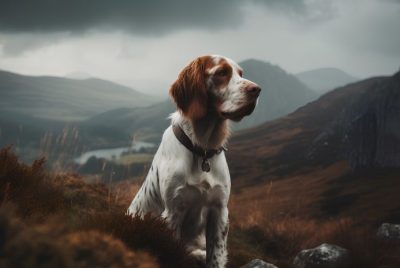Tosa Traits & Characteristics
Introduction
Hello, fellow dog enthusiasts! I’m thrilled to guide you through a journey exploring one of the world’s most unique large breeds, the Tosa. As a keen follower and advisor on large dog breeds, I’ve discovered the Tosa to be a remarkable breed that deserves our attention.
What is a Tosa?
Before we plunge into the depths of this fascinating breed, let’s clear the air on what a Tosa is. This breed, also known as the Tosa Inu, is a large Japanese dog breed known for its muscular build, remarkable endurance, and unique temperament. But how did this breed come to be? Let’s find out!
History of the Tosa
Origin
Our journey begins in the Tosa region, now known as Kochi, in Japan. Around the mid 19th century, local medium-sized Shikoku dogs were crossed with larger imported breeds. This fusion created an unmatched combination of size, strength, and agility – our beloved Tosa.
Development
Over time, Western breeds like the Mastiff, St. Bernard, Great Dane, and the Bulldog were further crossbred to enhance the Tosa’s strength, size, and stoic nature. Today, the Tosa stands as a beacon of Japanese cultural heritage and canine nobility.
Physical Characteristics of the Tosa
Size and Weight
So, just how large is the Tosa? P repare to be amazed! Males can weigh between 80 to 200 pounds, and females are not far behind, averaging between 80 to 130 pounds. With a height of up to 32 inches, they make a formidable yet majestic presence.
Coat and Color
The Tosa’s coat is short and dense, offering a range of colors from red, black, brindle, or fawn. Some Tosas may even sport a tiny white patch on their chest, adding an endearing touch to their rugged appearance.
Physical Strength
Muscular and robust, the Tosa is a testament to canine power. Known for their endurance, Tosas were historically used for dog wrestling, a tradition that still continues in parts of Japan. This mighty dog’s physical prowess is truly a spectacle.
Temperament and Behavior of the Tosa
Personality
Underneath their imposing figure lies a calm, courageous, and incredibly patient temperament. Tosas are quiet dogs and only bark when necessary, embodying the philosophy of “speak softly but carry a big stick”.
Interaction with Families and Children
Despite their size, Tosas can make a great family dog. They’re protective and gentle with children, but as with all large breeds, interactions with young kids should always be supervised.
Interaction with Other Animals
How do Tosas get along with other animals? Well, their social behavior can be a mixed bag. They can be friendly with dogs they’ve grown up with but might be wary of unfamiliar animals. It’s essential to introduce them to various social situations early and often.
Training a Tosa
Training Needs
Training a Tosa requires a firm, consistent hand. They respond best to positive reinforcement techniques and need a handler who can assert leadership without being harsh. Remember, they’re intelligent dogs and can quickly pick up on your emotions and intentions.
Effective Training Strategies
Socialization training should start early to help Tosas adjust to different environments, people, and animals. Obedience training is also crucial. They’re quick learners, and with the right motivation (think delicious treats), they can master various commands.
Health and Care
Health Concerns
In terms of health, Tosas are generally robust, but like any breed, they have certain genetic predispositions. Be on the lookout for hip dysplasia, stomach bloat, and allergies.
Diet
Tosas thrive on high-quality dog food formulated for large breeds. Ensure it has a good balance of proteins, fats, and carbs to keep your Tosa in peak health.
Exercise
Lastly, Tosas need regular exercise to keep their large bodies fit and minds stimulated. Daily walks, playtime, and mental challenges like puzzle toys are a must.
Conclusion
The Tosa is a magnificent breed that captures the heart with its impressive physical attributes and endearing personality. Though not the breed for everyone, with proper training, socialization, and care, a Tosa can become an unforgettable member of the family.
FAQs
1: Are Tosas good for first-time dog owners?
While Tosas are gentle and affectionate, their size, strength, and need for firm yet gentle handling might make them challenging for first-time dog owners. They require a strong, confident handler who can provide them with the necessary training and socialization. That’s not to say a novice couldn’t succeed with this breed, but they would likely need assistance from a professional trainer or experienced mentor.
2: How much exercise does a Tosa need?
Tosas, due to their size and energetic nature, require regular exercise. One to two hours of physical activity daily is recommended, which could include walks, play sessions, or training exercises. Remember, mental stimulation is as important as physical exercise, so incorporating games and puzzles can be a great way to keep them engaged and happy.
3: Are Tosas aggressive?
Tosas are not inherently aggressive. They were bred for strength and endurance, but they are also known for their patience and calm demeanor. However, their size and protective instincts can be intimidating if not correctly managed. Early socialization and training are crucial in ensuring a Tosa behaves well around other animals and people.
4: Can Tosas live in apartments?
Despite their size, Tosas can adapt to living in an apartment provided they get enough physical exercise and mental stimulation. They’re not as hyperactive as some other breeds, but they still need their daily walks and play sessions. Also, consider their size – they’ll need enough space to move around comfortably.
5: What is the lifespan of a Tosa?
Tosas are generally healthy dogs, and with proper care, they can live from 10 to 12 years. This lifespan is typical for larger dog breeds. Regular veterinary check-ups, a balanced diet, and plenty of exercise will contribute to a Tosa’s long, healthy life.




